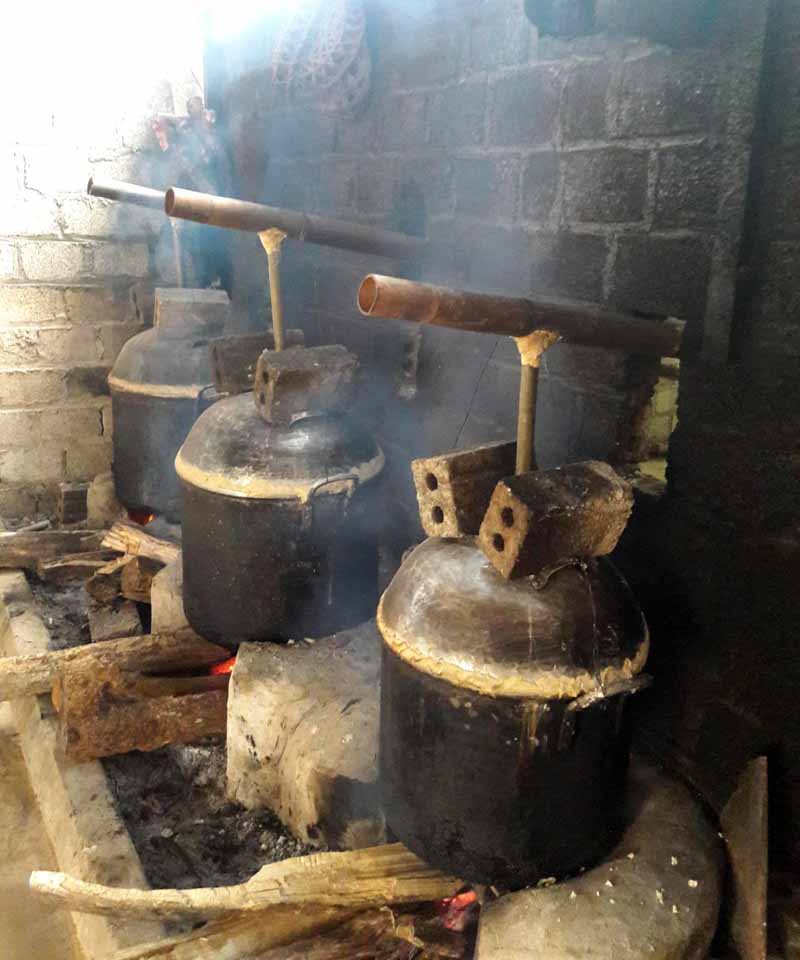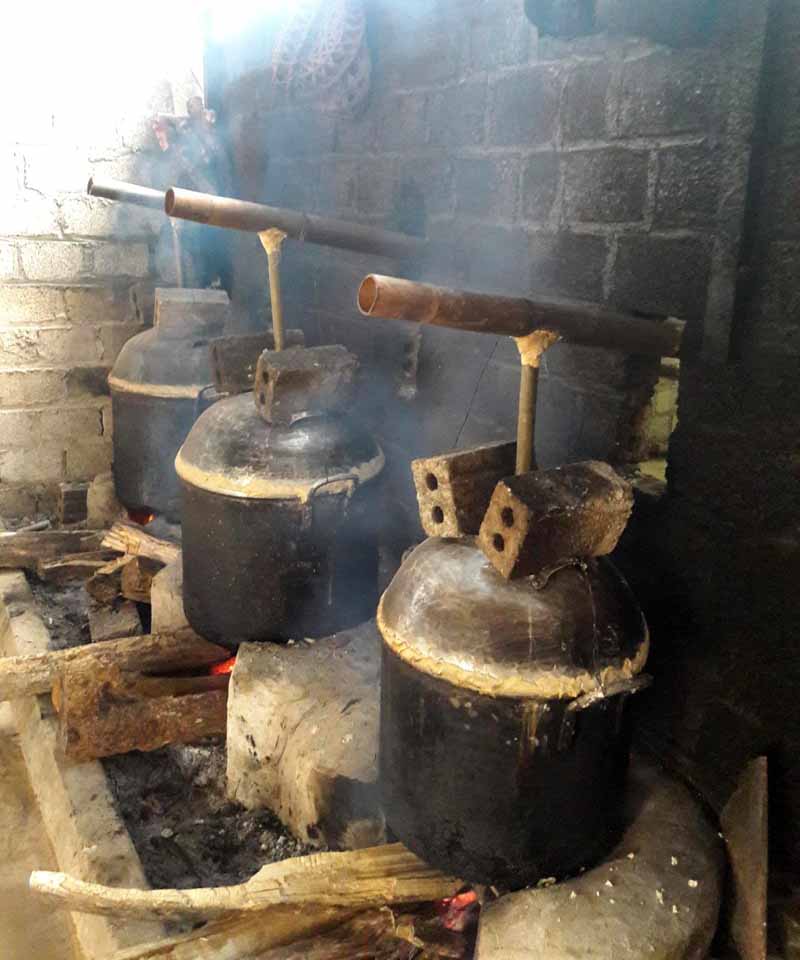


 Lang Dinh wine is
produced in a traditional way by the family of Mr. Bui Van Vinh in Phu Lai
commune (Yen Thuy).
Lang Dinh wine is
produced in a traditional way by the family of Mr. Bui Van Vinh in Phu Lai
commune (Yen Thuy).
Since the ancient time, after the harvest, every family in Dinh village, Phu Lai commune often used sticky rice to dry and then brew wine. They used a mill to turn rice husks to cook rice, then mixed the leavened yeast and left for some time, then brewed wine in the village’s unique traditional way of to distill the most quintessential wine drops of the mountainous flavor. According to the elderly people in the village, this wine has existed for a long time.
Wine production is often associated with the cultural life activities of the local people, especially the festival Xam communal house. The communal house is dedicated to the god named Bui Van Khu (Do Khu) and his wife, the princess Thien Tinh.
In the process of wine production, to create the product of high quality, in summer, when the temperature is high, people often use Cung cave, the natural limestone cave with the clean water for the fermentation of village’s wine.
Mr. Bui Van Vinh, the team leader of the wine brewery cooperative of Dinh village says: Recently, the National Office of Intellectual Property (the Ministry of Science and Technology) has issued a certificate of trademark registration "Du Din traditional wine” to the cooperative. The name Du Din is the name of the ancient Dinh village. Currently there are 18 households in the village producing wine with an annual output of more than 2 thousand liters of alcohol. The average income from 4 to 4.5 million VND a person every month.
Wine is brewed in a traditional way, all by hand, using the traditional Chinese leaven. Wine is distilled under a system of condensation through a not-old-not-young bamboo tube of dozens of meters long. Muong Dinh wine can only be brewed in winter. To make delicious and pure wine, in addition to the source of water granted by the nature, the brewer is always careful in wine production. They must be careful in choosing the time to brew wine, choosing the type of rice, combining with the traditional brewing of leavened yeast to make De rice as well as choosing the bamboo tube to get wine.
When brewing wine, it is necessary to leave fire lightly, or just leave the red charcoal together with the transmission of wine through bamboo tubes with 5 - 10 m long to the jars of wine, and it is necessary to have buckets or water to make the jars cool. In recent years, Lang Dinh wine can only be brewed from lunar September this year to lunar February of the next year.
Since December 2017, the wine making village of Lang Dinh wine has been granted a certificate of the traditional craft village. Along with that, the People's Committee of Yen Thuy district has also promoted the support to advertise and they have been searching for the product consumption market, and registered the quality for the Du Din wine.
Currently, wine production is done by the households without a common management and uniformity to ensure the product quality. The households strictly abide the wine production standards under the supervision of the cooperative, ensuring the production conditions, not polluting the environment, keeping the traditional wine production for the conservation and promotion of the national cultural identity at the same time.